Geumganggul Cave (금강굴)
9.1 Km 28146 2019-11-27
1091, Seoraksan-ro, Sokcho-si, Gangwon-do
+82-33-801-0900
Hollowed into the rocks of Seoraksan Mountain, about 600 meters above sea level, you will find Geumganggul Cave. This 23 square meters cave was once used as a place of worship, and contains a stone sitting Buddha and some earthenware. The route up the cave is quite steep, and visitors must walk across a few bridges and up concrete stairways. However, you will be rewarded with a captivating view of Cheonbuldong Valley.
The hiking trail from Seorakdong to Geumganggul Cave, which also passes by Biseondae, is 3.6 kilometers long and takes about 1 hour and 40 minutes.
Biseondae Rock (비선대)
9.1 Km 19608 2021-04-09
1091, Seoraksan-ro, Sokcho-si, Gangwon-do
+82-33-801-0900
Biseondae Rock is a large rock located in the Cheonbuldong Valley of Seoraksan Mountain. The rock blended with a giant surrounding rocky wall creates a mysterious atmosphere. When it rains, water flows down through the rock and forms a small waterfall. The stream of water winding around the rock is considered the magnificent view, which is similar to that of the Manpokdong Valley in Geumgangsan Mountain. When the season changes, its landscape boasts different scenery: full-blown flowers in spring, green and refreshing trees in summer, colorful autumnal leaves in autumn, and white snowy view in winter. Due to such a mysterious landscape, Biseondae Rock bears a legend in which Taoist hermit called Magoseon enjoyed scenery of this place and ascended to heaven. The name of Biseondae, meaning the rock (dae) where a Taoist hermit (seon) flew up (bi) to the sky, originates from this legend.
Naksansa Temple (낙산사)
9.3 Km 61805 2022-12-22
100, Naksansa-ro, Yangyang-gun, Gangwon-do
+82-33-672-2447
This ancient temple was built in the 11th year of King Munmu’s reign of Silla (671) by the Buddhist monk Uisang. Naksansa Temple is one of the foremost sights of Yangyang, and one of the most historic sites in the region. Along with Ganghwa’s Bomunsa Temple and Namhae’s Boriam Hermitage, it is said to be one of the three centers of the cult of Avalokitesvara in Korea. Its handsome view overlooking the East Sea has earned it a spot in the Eight Sights of Gwandong (eight famous sights in Yeongdong region of Gangwon-do), documented throughout the ages in many classic literature and poetry. Today’s Naksansa Temple is a product of many restorations and expansions, and has many examples of cultural heritage within its walls. There is a 16 meter-tall statue of the Avalokitesvara Bodhisattva to Uisangdae, a pavilion built to overlook the sunrise over the East Sea on a coastal cliff, Hongnyeonam Hermitage, built over the crashing waves, Seven-story Stone Pagoda of Naksansa Temple, Yangyang (Treasure No. 499), a Joseon-era pagoda with Goryeo-era style, and Stupa, Stele, and Reliquaries of Naksansa Temple, Yangyang (Treasure No. 1723), including a number of sarira. A mountain fire in 2005 resulted in the loss of 20 buildings, including the building that housed its bronze bell (formerly Treasure No. 479 of Korea). The temple also operates templestay programs available through its website.
Sinheungsa Temple (Seoraksan Mountain) (신흥사(설악산))
9.3 Km 74983 2024-03-12
1137 Seoraksan-ro, Sokcho-si, Gangwon-do
+82-33-636-7044
Sinheungsa Temple is a temple located in Seoraksan Mountain near Sokcho. It belongs to the Jogye Order of Korean Buddhism. It was originally founded as Hyangseongsa Temple by the monk Jajang in the Shilla dynasty (A.D. 652). Within the temple grounds, cultural heritage sites such as Geungnakbojeon Hall, a wooden structure from the mid-Joseon period, and the Three-story Stone Pagoda at Hyangseongsa Temple Site. The temple offers a templestay program where visitors can experience temple life firsthand. Participants can engage in various activities such as Buddhist ceremonies, Buddhist prayer, 108 prostrations, and lotus lantern and rosary making.
Uisangdae Pavilion (낙산사 의상대)
9.4 Km 16142 2021-04-12
100, Naksansa-ro, Yangyang-gun, Gangwon-do
+82-33-672-2447
This pavilion is located on a seaside cliff on the way from Yangyang’s Naksansa Temple to Gwaneumgul Cave of Hongnyeonam Hermitage. The word “dae” in Uisangdae refers to a building built at a vantage point for areas with beautiful scenery. Indeed, the view of the East Sea and the coast from Uisangdae Pavilion awarded its recognition as one of the Eight Sights of Yangyang, and a must-visit place for all visitors to Naksansa Temple. Jeong Cheol (pen-name: Songgang), a famed scholar and writer of the poem Song of Diamond Mountains, chose the pavilion as one of the Eight Sights of Gwandong, and the pavilion is today one of the popular sites for sunrise-viewing on the east coast of Korea. Together with Hongnyeonam Hermitage, it is designated as the Scenic Site No. 27 of Korea under the name “Uisangdae Pavilion and Hongnyeonam Hermitage of Naksansa Temple, Yangyang.” Uisangdae is named after Uisang, a respected Silla-era Buddhist monk who is said to have founded this temple in 671 (11th year of King Munmu’s reign of Silla), and many stories of his deeds can still be found in the temple. For instance, Uisangdae is said to be the site where he meditated before founding Naksansa Temple at its present site. Today’s pavilion was restored to its present hexagonal form in 1995.
Jeongin Hoesikdang (정인회식당)
9.9 Km 18009 2024-02-16
32 Naksansa-ro, Ganghyeon-myeon, Yangyang-gun, Gangwon-do
Jeongin Hoesikdang, situated near Naksan Beach in Yangyang, specializes in mul hoe (cold raw fish soup) and saengseon jjigae (fish jjigae). It prides itself on using fresh fish, sourced from nearby ports and used within a day of purchase. The restaurant's signature dish is sanureok maeuntang (spicy rockfish stew). Other popular menu items include modeum mul hoe (assorted cold raw fish soup), seongge albap (sea urchin roe rice), and ojingeo hoe deopbap (raw squid bibimbap). Additionally, soups like gomchi tang (spicy moray eel stew) and haemul tang (spicy seafood stew) are also highly recommended. For guests interested in local attractions, the scenic Naksansa Temple and Naksanhaebyeon Beach are nearby.
Geumgangsan Daegehoetjip (금강산대게횟집)
9.9 Km 169 2021-03-20
8-5, Haemaji-gil, Yangyang-gun, Gangwon-do
+82-33-671-5207
A restaurant that sells a variety of seafood. The best menu at this restaurant is king crab. This seafood restaurant is located in Yangyang-gun, Gangwon-do.
Naksan Beach (낙산해수욕장)
10.3 Km 70554 2022-12-22
59, Haemaji-gil, Yangyang-gun, Gangwon-do
+82-33-670-2518
Naksan Beach is one of the most famous beaches in Yangyang, located in Joseon-ri, Yangyang-eup, Yangyang-gun, Gangwon-do. Since its opening in 1963, it has attracted more than 1 million visitors each year, its reputation being rivaled only by the Gyeongpodae Beach on the east coast of Korea. The 4 kilometer-long sand beach contrasts magnificently with the lush pine trees of the area. The water is less than 1.5 meter deep, making it a good place for all ages. Naksanhang Port marks one end of the beach, behind which Naksan Mountain, the location of Naksansa Temple, can be found. The other end has a lake formed at the delta of Namdaecheon Stream, which originates from Seoraksan Mountain. Many cafes, convenience stores, restaurants, and accommodations cater to the needs of the visitors. The beach sees considerable traffic in winter as well, when it serves as a popular venue for sunrise-watching, particularly for the New Year’s Day festival.
Naksan Provincial Park (낙산도립공원)
10.4 Km 10954 2018-01-25
59, Haemaji-gil, Yangyang-gun, Gangwon-do
+82-33-670-2518
Naksan Provincial Park takes up 24km of shoreline in Yangyang, Gangwon-do. The park is centered on Naksansa Temple and Naksan Beach, but includes Osan, Dongho, and Hajodae Beaches, as well as many lakes and cliffs. The park is a great place to learn about Korean culture, including Buddhist culture at Naksansa Temple and other cultural relics, and the shoreline cliffs of pine trees. The park is a popular attraction in the summer, when visitors can swim in the ocean and play in the sand along the coast.
Ulsanbawi Rock Milky Way Photo Spot on Old Misiryeong Trail (미시령옛길 울산바위 은하수)
10.5 Km 1 2024-03-18
5110 Donghae-daero, Toseong-myeon, Goseong-gun, Gangwon-do
Misiryeong Pass, historically a pathway connecting Inje to Sokcho, also serves as an observation point for viewing Ulsanbawi Rock in Seoraksan Mountain. More recently, it has gained popularity as a photo spot for capturing the Milky Way. As a result, on clear nights, the parking lot is often filled with eager photographers.
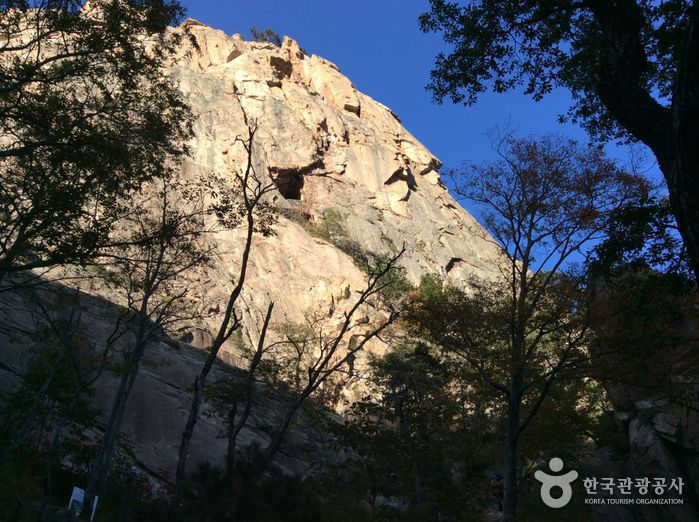

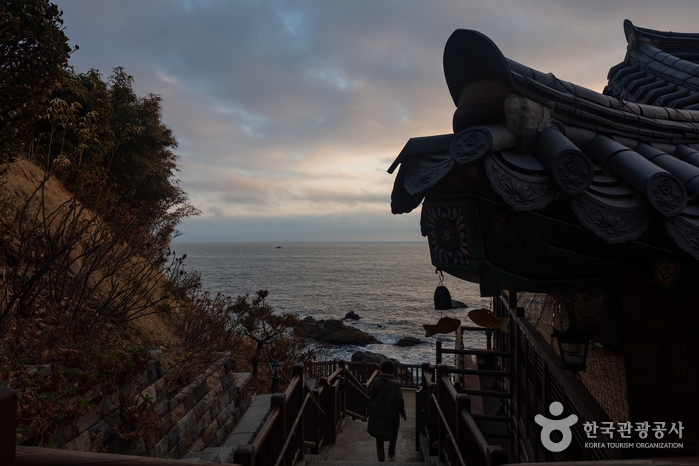
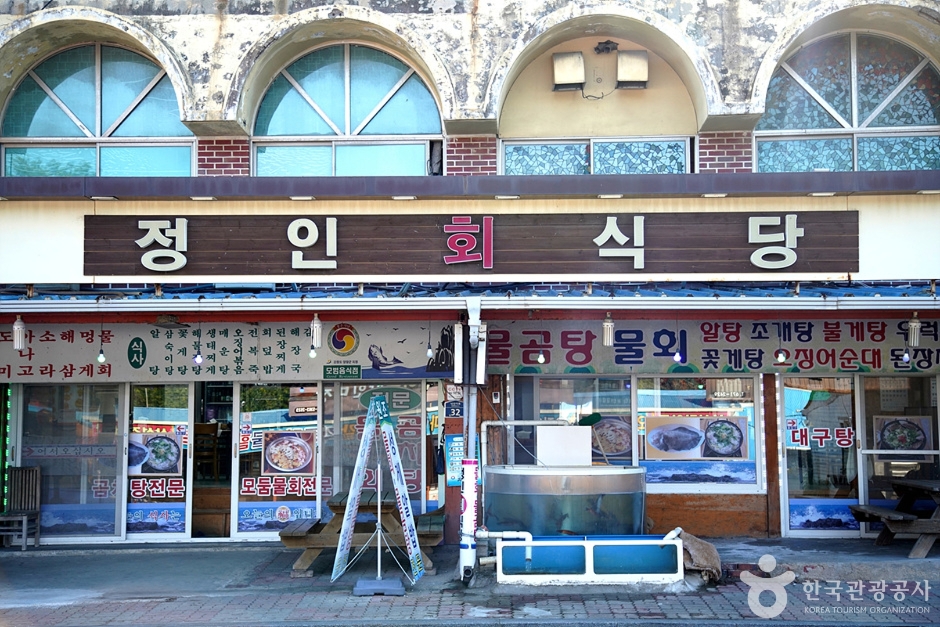
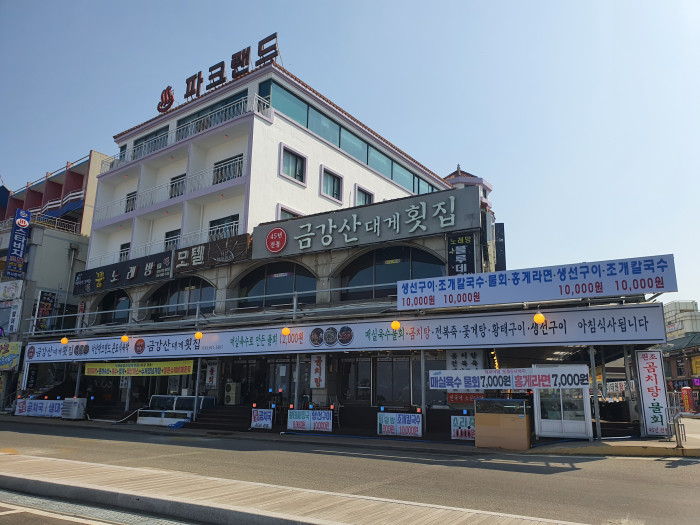
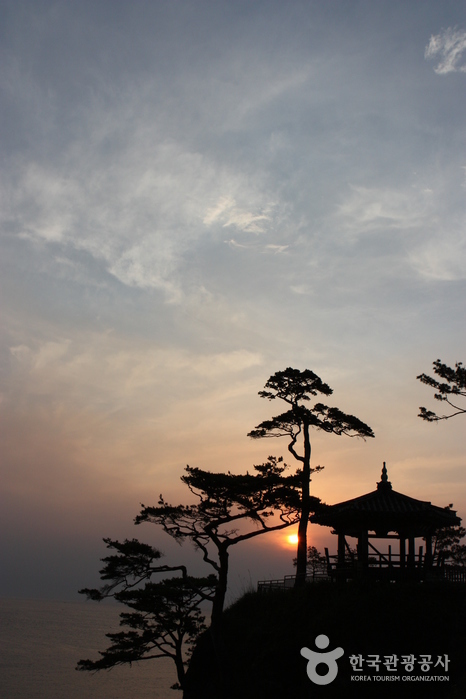
 English
English
 한국어
한국어 日本語
日本語 中文(简体)
中文(简体) Deutsch
Deutsch Français
Français Español
Español Русский
Русский